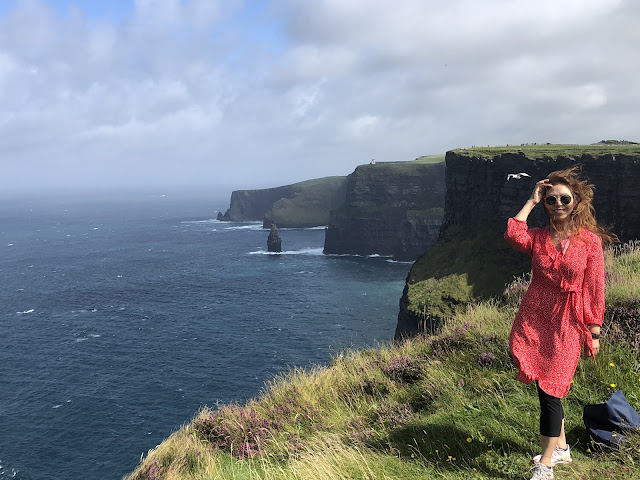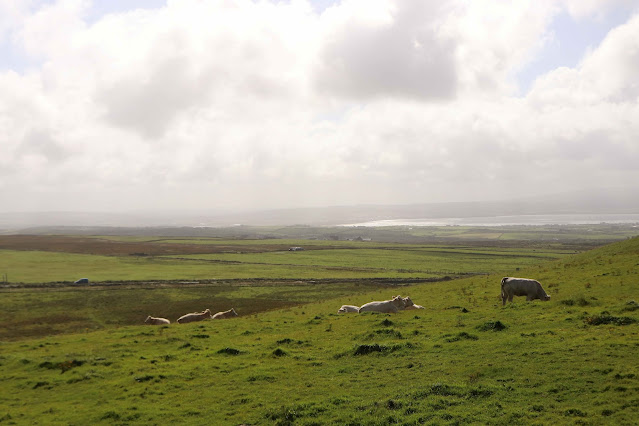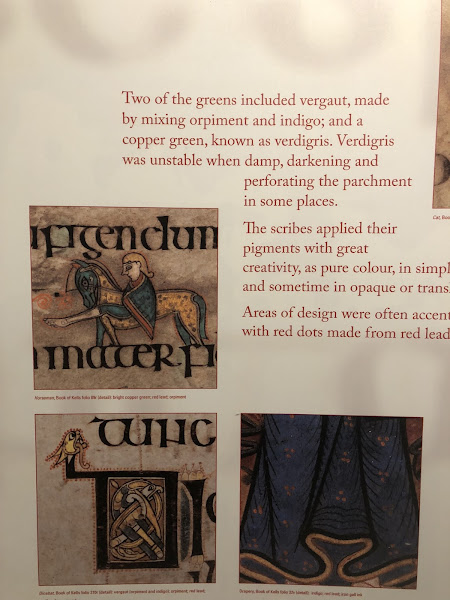The Cliffs of Moher, located on the western coast of Ireland in County Clare, are among the country’s most iconic and breathtaking natural landmarks. Stretching for about 14 kilometers (8.7 miles) along the Atlantic Ocean, the cliffs rise dramatically from the sea, reaching heights of up to 214 meters (702 feet) at their highest point.
Like many tourists, I embarked on a 13-hour day trip from Dublin to see the Cliffs of Moher. The tour bus departed from a stop right outside Trinity College at 7 a.m., and after a 4-hour journey, including a bathroom stop, we arrived at the cliffs. We were given 2 hours to explore the trail and take in the stunning views. Unfortunately, two hours was barely enough to walk one way (towards the south), leaving the other direction unexplored. This limitation is why I’m not fond of organized tours—I prefer the freedom to explore at my own pace rather than adhering to a strict timeline. Despite this, walking along the trail and taking in the cliffs was a special experience.
On the bus ride, I was seated next to a 24-year-old young man from Georgia who was on his first vacation to Dublin. We talked almost non-stop and ended up walking the trail together. This is another reason I love traveling: you always meet people from different countries who broaden your perspective. I learned a lot from him, and although I was traveling alone, I never felt lonely.















































.JPG)
%20(2).JPG)




.JPG)


.JPG)



3.JPG)
.JPG)
2.JPG)

